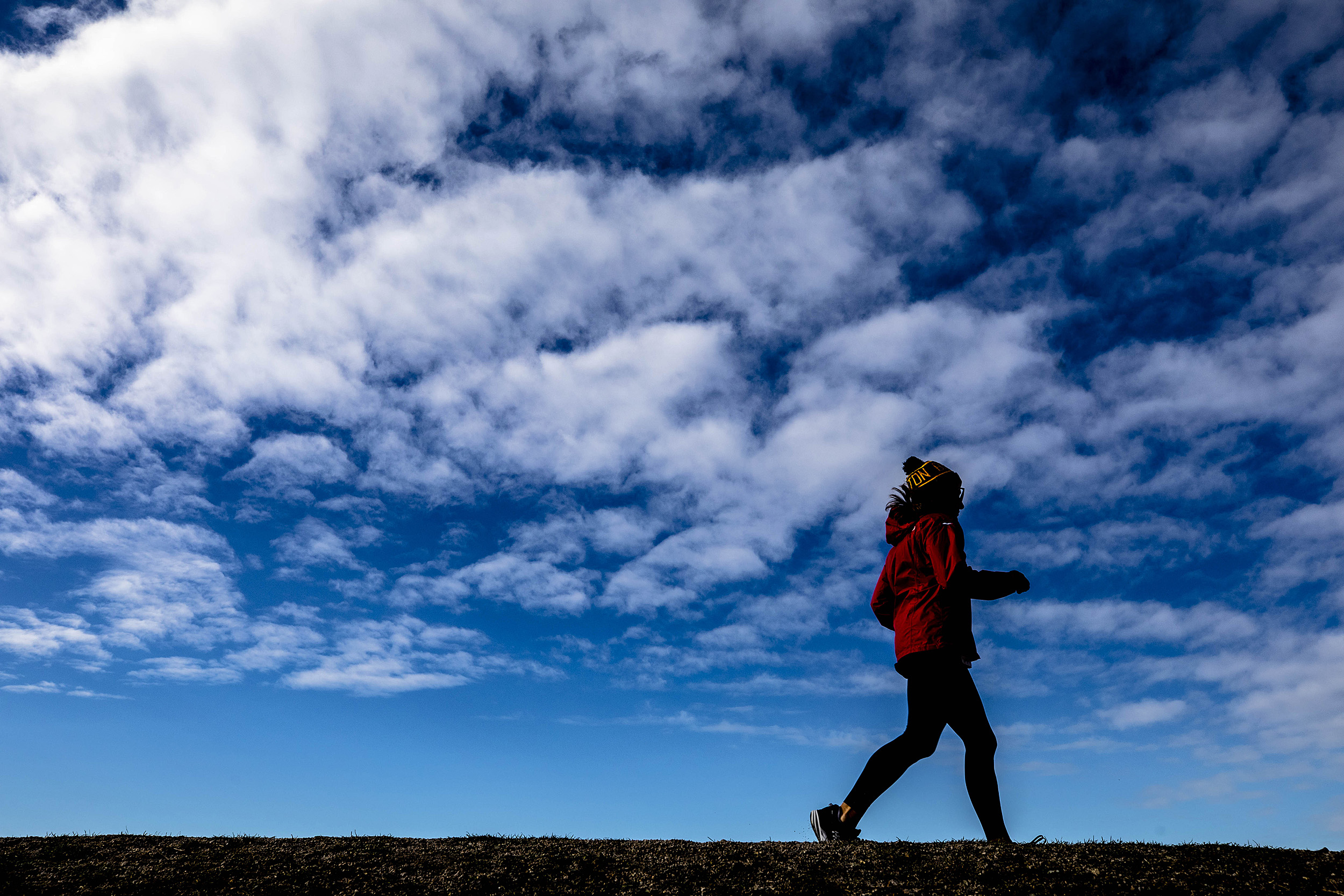
Rose Lincoln/Harvard file photo
Daily walks? Baking? Mindfulness? Which pandemic changes are keepers?
Started to help us cope, some new habits turned out to be good ones
To cope with the isolation and uncertainties brought on by the COVID pandemic, many people added new rituals to their lives: nature walking or home exercising, baking or gardening, video chatting or binge watching, learning to play an instrument or adopting a pet. The Gazette asked members of the Harvard community what they tried — and whether they plan to keep those new preoccupations in their lives.
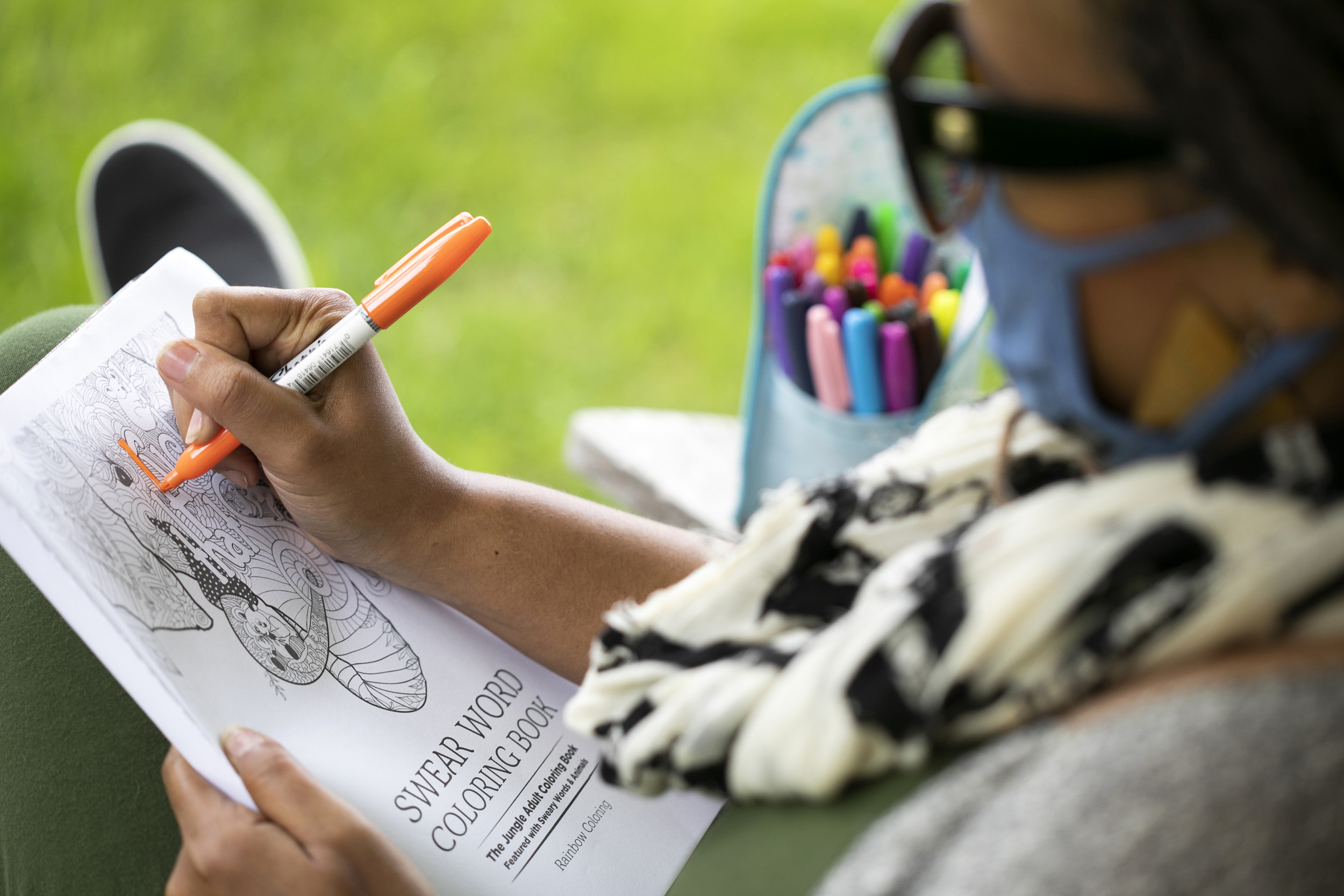
Linda Chavers, Ph.D. ’13
Stephanie Mitchell/Harvard Staff Photographer
Linda Chavers, Ph.D. ’13
Allston Burr Resident Dean of Winthrop House, Assistant Dean of Harvard College
Lecturer, Department of African and African and African American Studies
I have not touched a coloring book since I was a toddler, but I found myself always anxious and needing to do something with my hands that didn’t involve typing an email or scrolling. Enter adult coloring books. I went to Google and Etsy and just put coloring books for adults and got a bunch of links. I am ashamed to say that I ordered most of the books and markers (Sharpies in Electric and CosmoGlam, and Tombow in Bright, Galaxy, and Pastel) from Amazon.
While I wasn’t specifically looking for ones that used foul language, once I saw them I knew they were exactly what I needed. It’s a tall order to work in higher education (or anything, really) and have to perform so much cognitive dissonance around being positive for our students whilst our entire world suffers from a global pandemic that exacerbates already-existing inequities. Then add on being a Black woman in a very not-diverse environment where you have to make small talk while waking up to the news of another Black person killed by the police state. What could be more cathartic than coloring in phrases such as “[EXPLETIVE] THIS” or, better, “WHAT THE [EXPLETIVE] IS GOING ON” set in pastoral and curlicue designs? After a long day of screens and Zoom, something about the tangible comfort of brush to page and seeing the bright visual of the crass and the coarse within the elegant, graceful form of drawing helped soothe my anxiety and stress. I felt calmer afterwards probably because the finished product was hilarious. When campus moved to level LIME as a health setting, I drew and posted this on Instagram.
I absolutely plan to continue the practice. Being isolated at home and on the screen for eight hours, I used this as a symbolic signaling to break. Computer down, office door closed, pull out the art materials and just sit with coloring for an hour. COVID-19 is getting more and more under control, but white supremacy surely is not, so I don’t see the need for this practice in self-soothing lessening anytime soon.
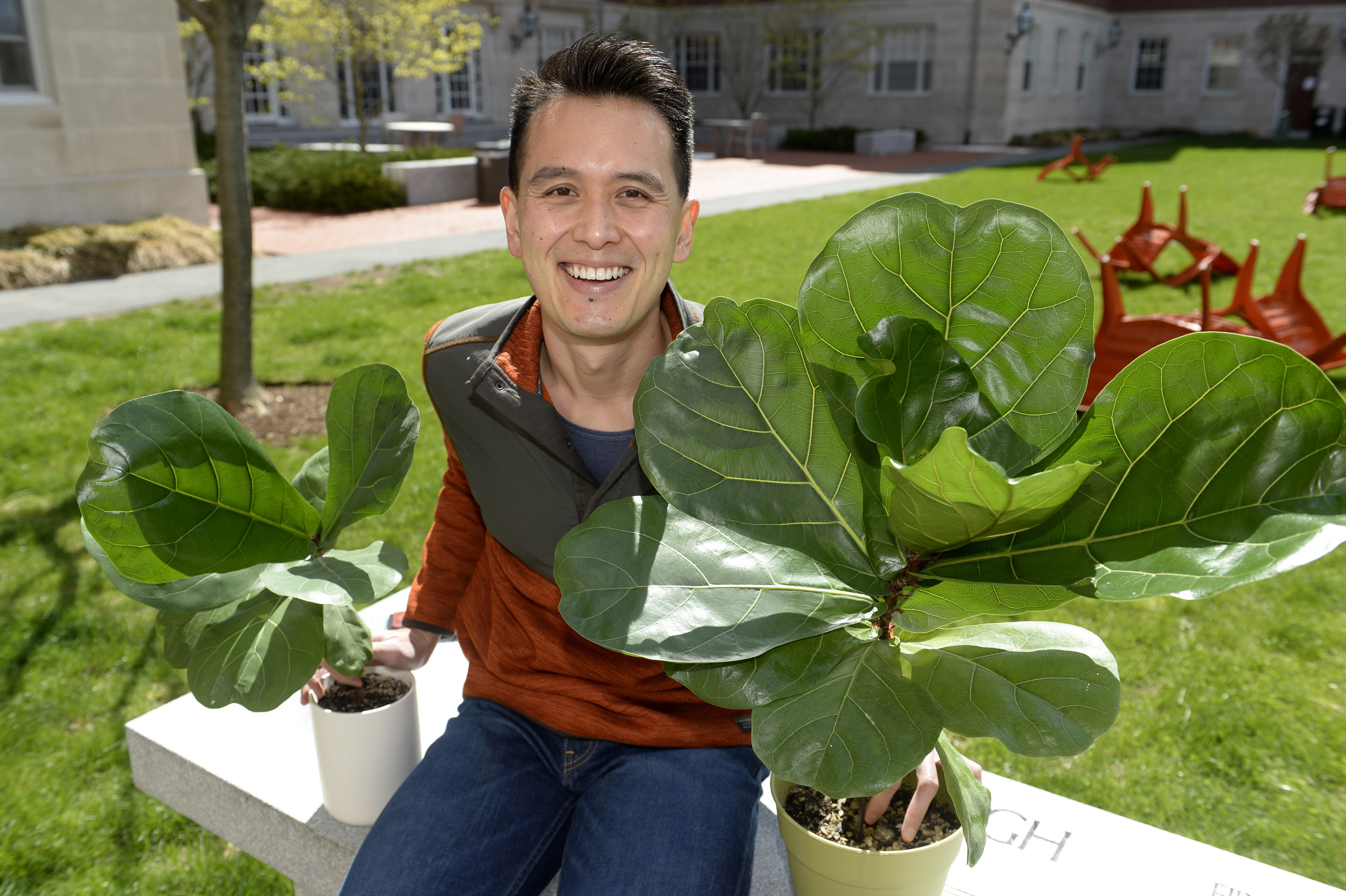
Michael Uy, Ph.D. ’17
Jon Chase/Harvard Staff Photographer
Michael Uy, Ph.D. ’17
Dunster House Resident Dean, Assistant Dean of Harvard College, Lecturer in Music
I’ve always had a fondness for living plants (maybe something I picked up from my late grandmother Virginia Sy — she was born and raised in Batangas, Philippines — and was especially adept at cultivating tan hua flowers in our garden in Southern California, where I grew up. ) Tan hua flowers, which were featured in the movie “Crazy Rich Asians,” bloom only at night, and only once a year before fading.
But my indoor gardening grew by leaps and bounds during the pandemic. Two fiddle-leaf fig trees were propagated into six; two avocado trees grown from pit were joined by nine more, and I acquired two goldfish and a snail so that I could use the water from the aquarium to fertilize my plants. I even purchased two aerogardens so that I could grow basil, mint, kale, and tatso. These pandemic plants won’t ever know how much life they gave me over the past year.
My journey with plants has taken many twists and turns, but I feel like I’ve learned a lot. When I was overwatering some plants and attracted fungus gnats, I purchased a carnivorous cape sundew that lured the gnats and flies. Unfortunately, I still have a perennial issue with spider mites. I’m able to eliminate them for a short time with a mixture of neem oil and castile soap, only to have them return a few months later. I figuratively die a little each time I inspect one of my fiddle leaf trees and find these tiny mites crawling on the green leaves and creating these thin webs on the leaves’ edges. Some of the avocado trees I’ve given away as gifts — and that’s true for some propagated pothos plants. Planting and propagating are great hobbies, but it’s also nice to fill one’s rooms with green life!
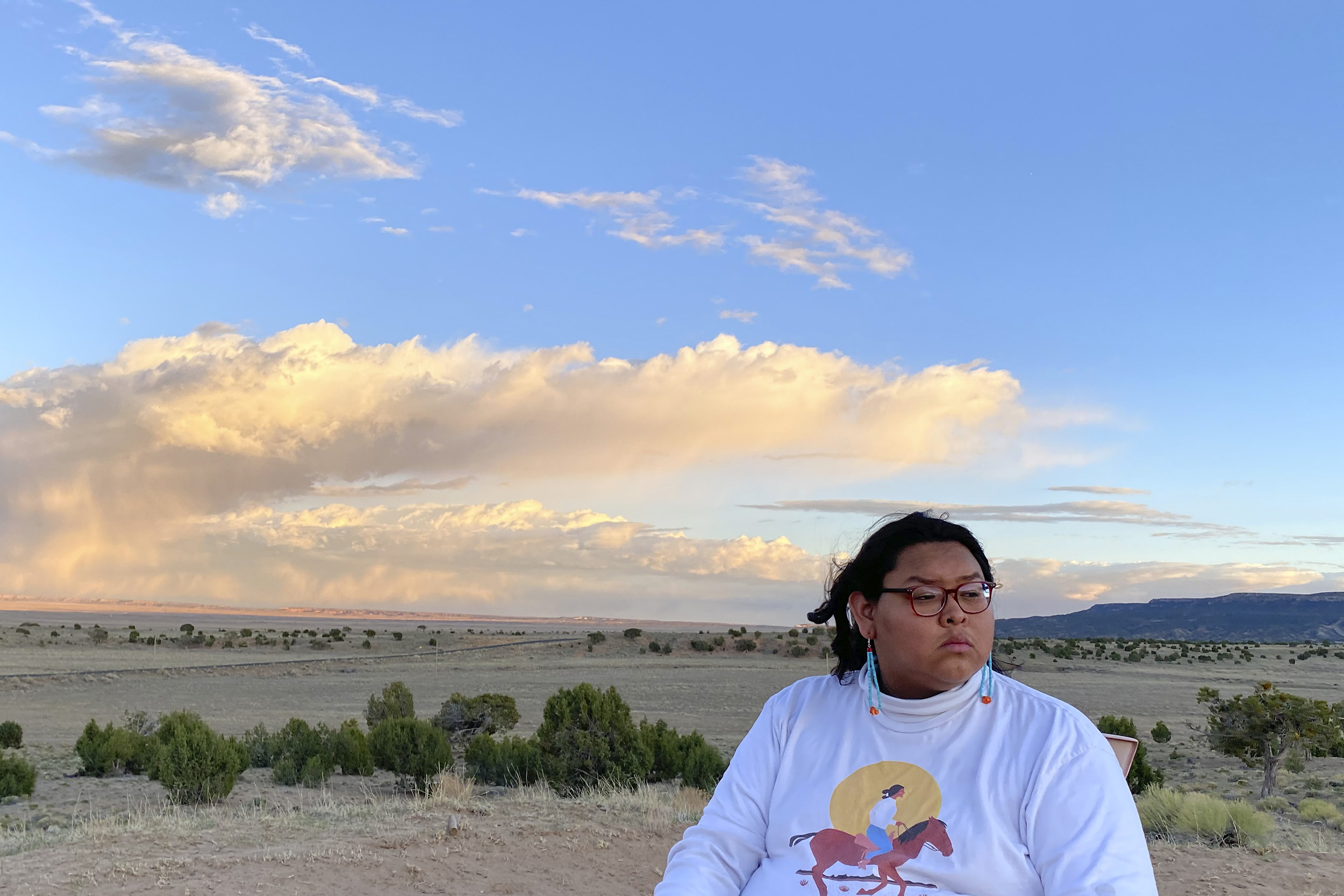
Keanu Gorman ’22
Photo courtesy of Keanu Gorman
Keanu Gorman ’22
Concentrator in History & Literature
I came back home in March of last year. I’m in Tsélání, the place where I was raised and where my family has lived for generations. It’s a small community in the Navajo reservation, in Arizona. I had been thinking about taking a leave for some time. After completing my junior fall last fall, I realized that it was time for me to step back a little bit and focus on myself and reconnect with my community and my home.
Since I came back home, I’ve been trying to incorporate self-care activities. I took a break from social media, which was very good for my mental health. Before, I was constantly scrolling through social media, which created fear and anxiety with all the news about COVID. The main habit I developed during this time was learning how to be present. It’s a kind of meditation practice. Instead of being absorbed in my thoughts, constantly thinking about the future or the past, I allowed myself to be in the present moment.
It’s a daily practice. I sit on top of a hill, just to the south side of our house, and I look at the mountain, the canyon, the plains, the foothills of the mountain, and I think to myself, “This is where I come from. This is where my family raised me; this is where my ancestors are; this is our land; this is where I belong; this is where my heart is,” and I realize that this physical place exists within me. It’s a grounding exercise.
It’s also a sensory experience. I close my eyes and listen to the wind and the birds chirping, which I love. I listen to the horses and the sheep in the distance, and I feel the sand underneath my feet and the heat on my face. I feel content in this beautiful place, my homeland. This practice has been one of the most refreshing and rewarding things of being back home. Learning how to be present is one of the biggest lessons that I’ll be taking with me wherever I go. When I return to campus in the fall, I’ll do my best to continue this practice.
Joe Bagley (from left), Jack (the dog), Meredith Vasta, Cedric Woods, and Jen Poulsen (on floor).
Photo courtesy of Meredith Vasta
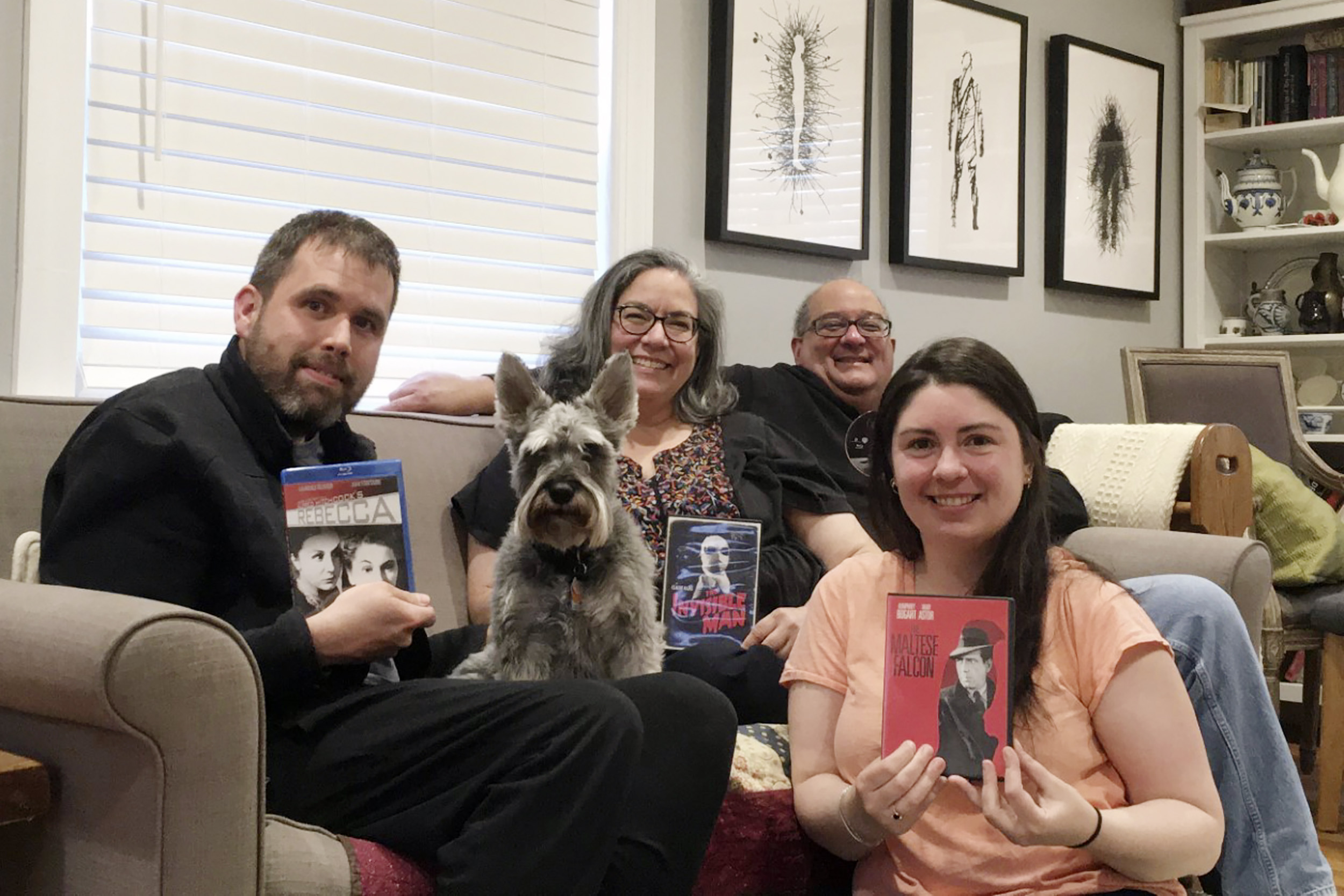
Meredith Vasta
Collections Steward, Harvard Peabody Museum
One good thing I have learned during COVID is how to continue to do the stuff I love, but just differently. There has been so much “big picture” stuff to be anxious about over the last year and one of my coping mechanisms in the past was going out to dinner and movie. Getting away from my own couch was critical for this “escape” to work. My husband and I loved going to the movie theater pre-COVID.
Luckily, my Peabody Museum colleague Jen Poulsen lives a few doors away from me. We created a tight COVID circle of trust, and she started hosting Friday Night Movie Night. We ordered dinner in (supporting small businesses), and we started to plow through her library of classic films from the 1930s to the 1960s — films that I have always known about, but never watched. So far, we’ve watched “Casablanca” (1942), “Suspicion” (1941), “Rear Window” (1954), “Vertigo” (1958), “Frankenstein” (1931), “North by Northwest” (1959), “Marnie” (1964), “Gaslight” (1944), “The Haunting” (1963), “Dracula” (1931), and “The Raven” (1963), featuring a campy 26-year-old Jack Nicholson and Vincent Price. We all decided we are going to continue with this Friday night tradition because we have so much fun, but the bigger takeaway for me is learning how to find joy and fun in the face of obstacles.
Donald Brown, Ph.D. ’22
Photo courtesy of Donald Brown
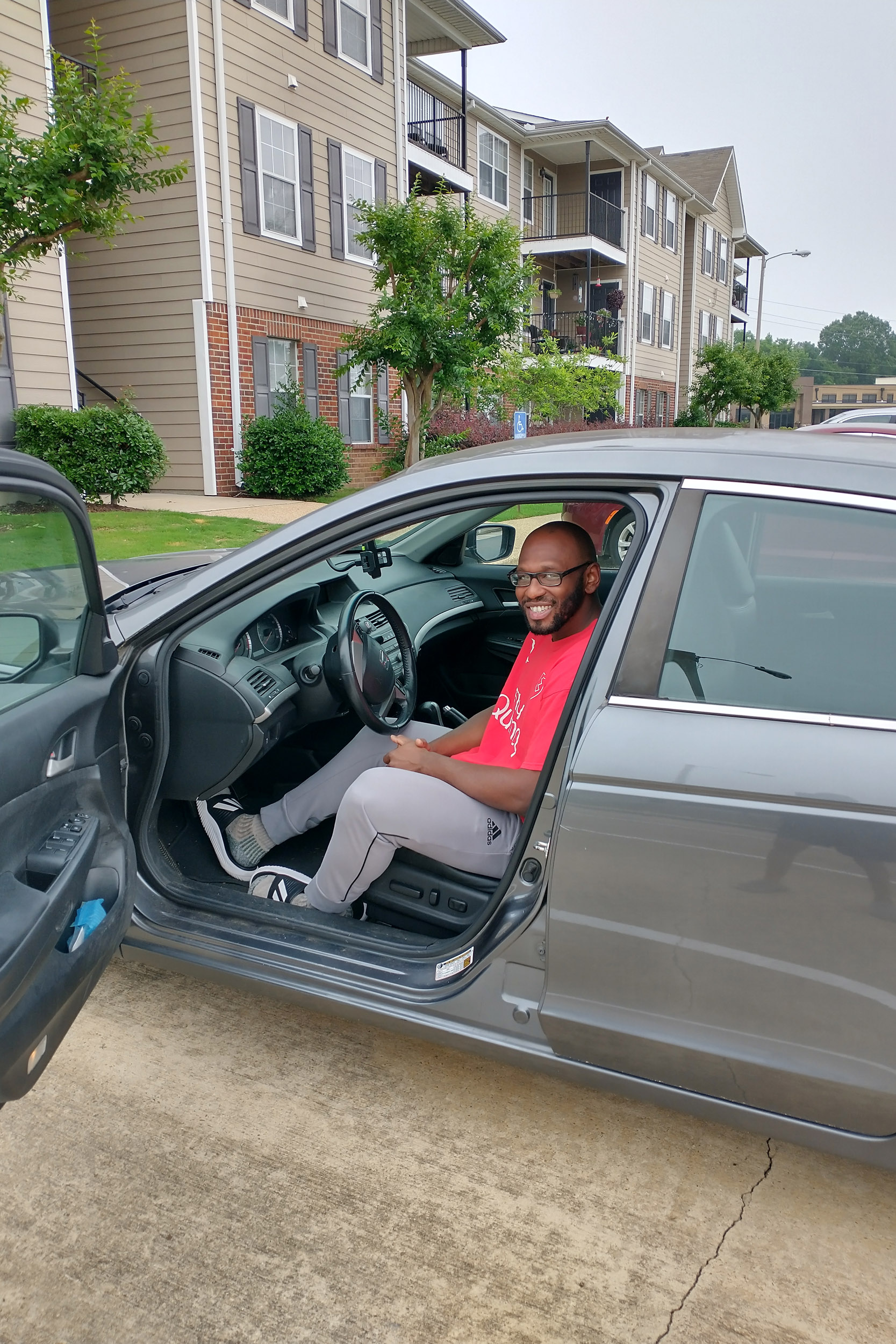
Donald Brown, Ph.D. ’22
Specializing in English
I’m in Mississippi for the year on a visiting fellowship to teach at Mississippi State University, my alma mater. Since I have been here, I’ve been taking lots of road trips. I went to Memphis, [Tennessee,] Nashville, [Tennessee,] Birmingham, [Alabama,] and other cities nearby, and I began listening to audible books while driving.
I had listened to audiobooks before, but because I needed to drive around, I wanted to take advantage of the situation and kill two birds with one stone. I realized that listening to audiobooks is entertaining, but it also helped my imagination run wild. At the core, I found that the tone in audiobooks mattered a lot. When I read on my own, I do not consider the tone in which the character says things, but when I hear somebody acting it out, it forces me to think about different interpretative possibilities.
I’ve had some productive reading experiences while driving. I read W.E.B. Du Bois’ “Black Reconstruction in America, 1860-1880,” Isabel Wilkerson’s “The Warmth of Other Suns,” Richard Wright’s “Uncle Tom’s Children,” Margaret Walker’s “Jubilee,” John E. Wideman’s “Writing to Save a Life,” and Anne Moody’s “Coming of Age in Mississippi.” These are books I had read extensively before because they’re part of my research, which is about the Great Migration. But listening to the audiobook versions provided deeper insights. Oftentimes, my mind would be spinning with lots of ideas as the audiobooks were playing. I’d have to stop the audiobook and click the record button on my phone to go through all the things I was thinking about, and when I’d get back to my apartment, I’d type them out. I really enjoyed the whole process. It nourished my imagination; it helped the time go by; and it was generative for my research.
I haven’t lived in Mississippi for seven years. The pandemic gave me the opportunity to go back, and during my road trips, I’d look at my state anew, and because a lot of the books I was listening to were about Mississippi, the whole experience was kind of surreal. I definitely plan on listening to audiobooks once we go back to our lives before COVID. I’m driving back up to Boston in the summer and will be taking road trips around Massachusetts, Rhode Island, etc. But even when I’m not driving, I plan on taking walks and listening to audiobooks.
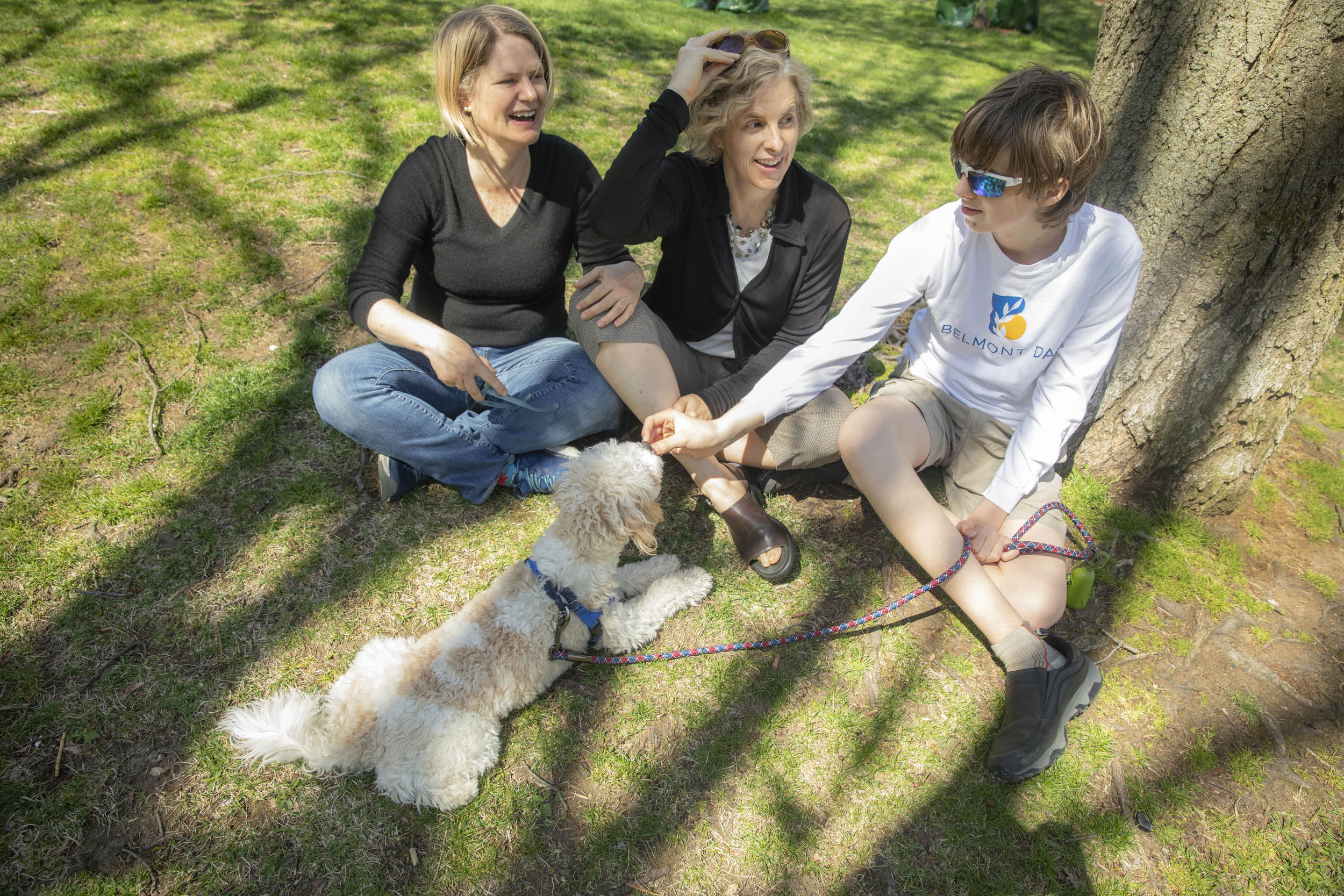
Ingrid Katz (center) with her wife, Alexi Wright (left), son Thomas Wright-Katz, and dog Pickles in Dana Park, Cambridge.
Kris Snibbe/Harvard Staff Photographer
Ingrid Katz
Associate Professor of Medicine at Harvard Medical School
Associate Faculty Director, Harvard Global Health Institute
I haven’t been on a plane now for over a year, which is very odd to me. Working in global health, I was on a plane all of the time, but this time has forced us all to stay wherever we are and travel only if needed. There’s something very profound about sitting with yourself. It allows us to recenter. When the pandemic began, my family and I started doing hikes and nature walks. We got a pandemic puppy, and that has been a joy for all of us, especially for our son, who is in middle school. We spent a lot of time this fall, and even into the winter, going on hiking trails and learning about the natural beauty around us.
I remember a hike we took wearing snowshoes. It had been a bit of a cold, snowy stretch in the middle of winter, and we were all kind of hitting a wall. We went out to Lincoln with friends of ours. The snow had just fallen, and it was gorgeous. We brought out our snowshoes, and our puppies were happily playing in the snow. It was so quiet. We listened to the sounds around us, which was mostly us walking on our snowshoes and our dog running in front of us. It was a beautiful reminder of the world we live in. It was a real joy.
I’m going to be really mindful to build in time with my family and continue our hikes because I enjoy being out in nature, but I also enjoy being with the people I love: my wife, my son, and our puppy. It’s hard to say that I plan to travel less, but I have come to see how much I can do remotely. There is something about the nature of my work: I work with human beings; I don’t work in petri dishes. But I think I’ll be much more careful about where and when I commit my time because I realized both how valuable it is to be with my family, but also that we can do a lot more online than I had expected.
Yuhua Wang playing his guitar with daughter Yushi on piano.
Photo courtesy of Yuhua Wang
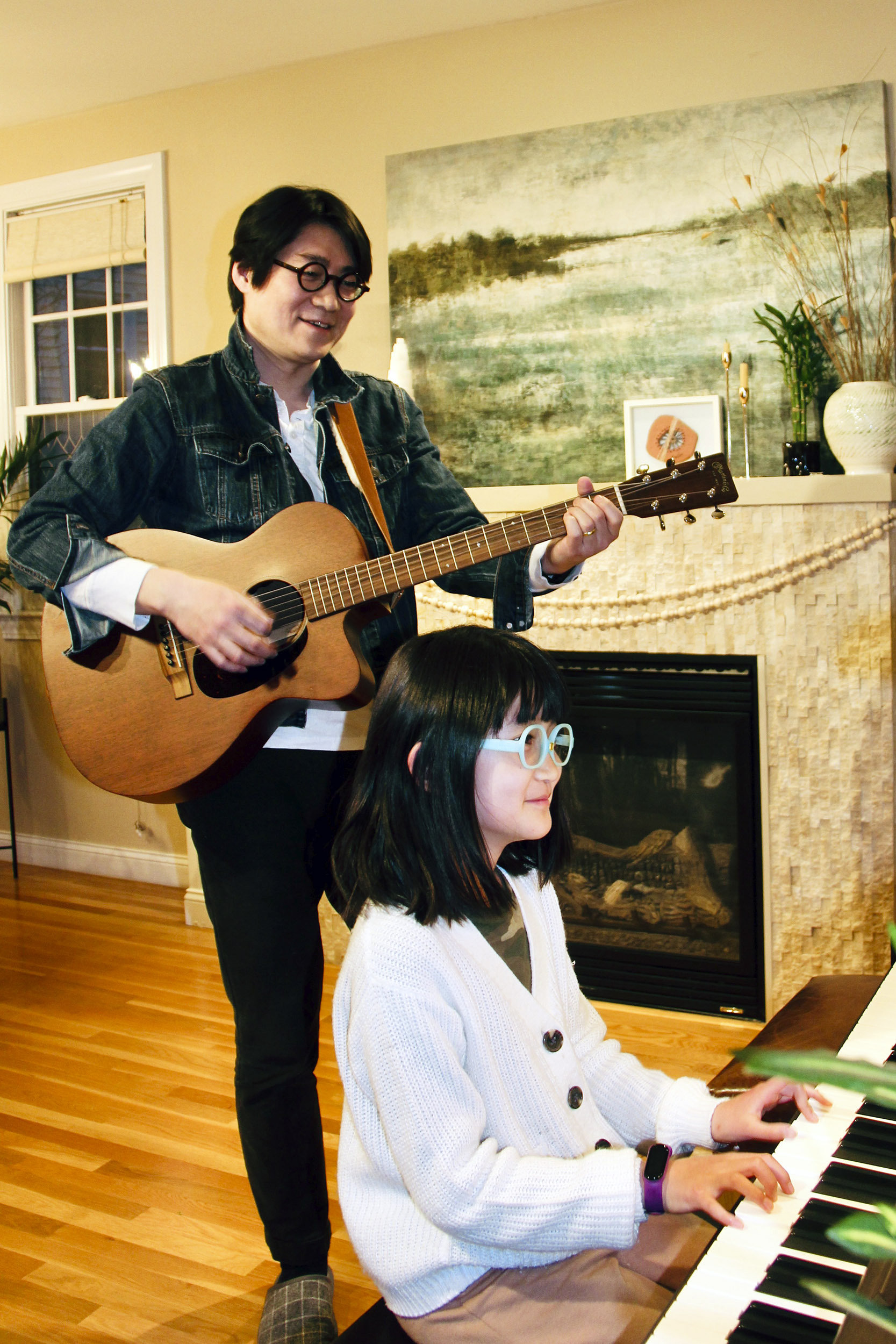
Yuhua Wang
Frederick S. Danziger Associate Professor of Government
Before the pandemic, my wife, my 9-year old daughter, Yushi, and I were always busy. But after March of last year, suddenly we had a lot of family time. I thought that it’d be great to do something together as a family. My daughter was learning piano; she had been taking lessons for three or four years. My wife, Boyang Chai, is a biostatistician at the Harvard T.H. Chan School of Public Health, and plays guqin, a Chinese traditional instrument. I thought it was a good time for me to pick up a new instrument. In April, I bought a guitar, a ukulele, and some harmonicas, and we started playing music together. Playing music by yourself could be a bit boring, but doing it with others is fun. We’ve been playing together for over a year now. It has been really helpful for my mental health, but also just a great way to spend time with my family.
Playing music is like meditation because you have to be focused, and it really helped me distract from the anxieties brought on by the pandemic. I used to play guitar when I was in college, but I bought books and watched YouTube videos. I used to play in Chinese folk bands, but during this last year, I’ve learned how to play U.S. folk songs from the 1960s and the 1970s; classic rock, the Beatles, Bob Dylan, and Simon and Garfunkel.
I do cherish the time that the three of us spent together during this last year. It has been a very special time. Going back to normal definitely will bring some challenges for keeping this habit because we will spend more time outside of the home. But I’m committed to continuing playing music together because being together is so helpful for all of us, but also because it’s so much fun.
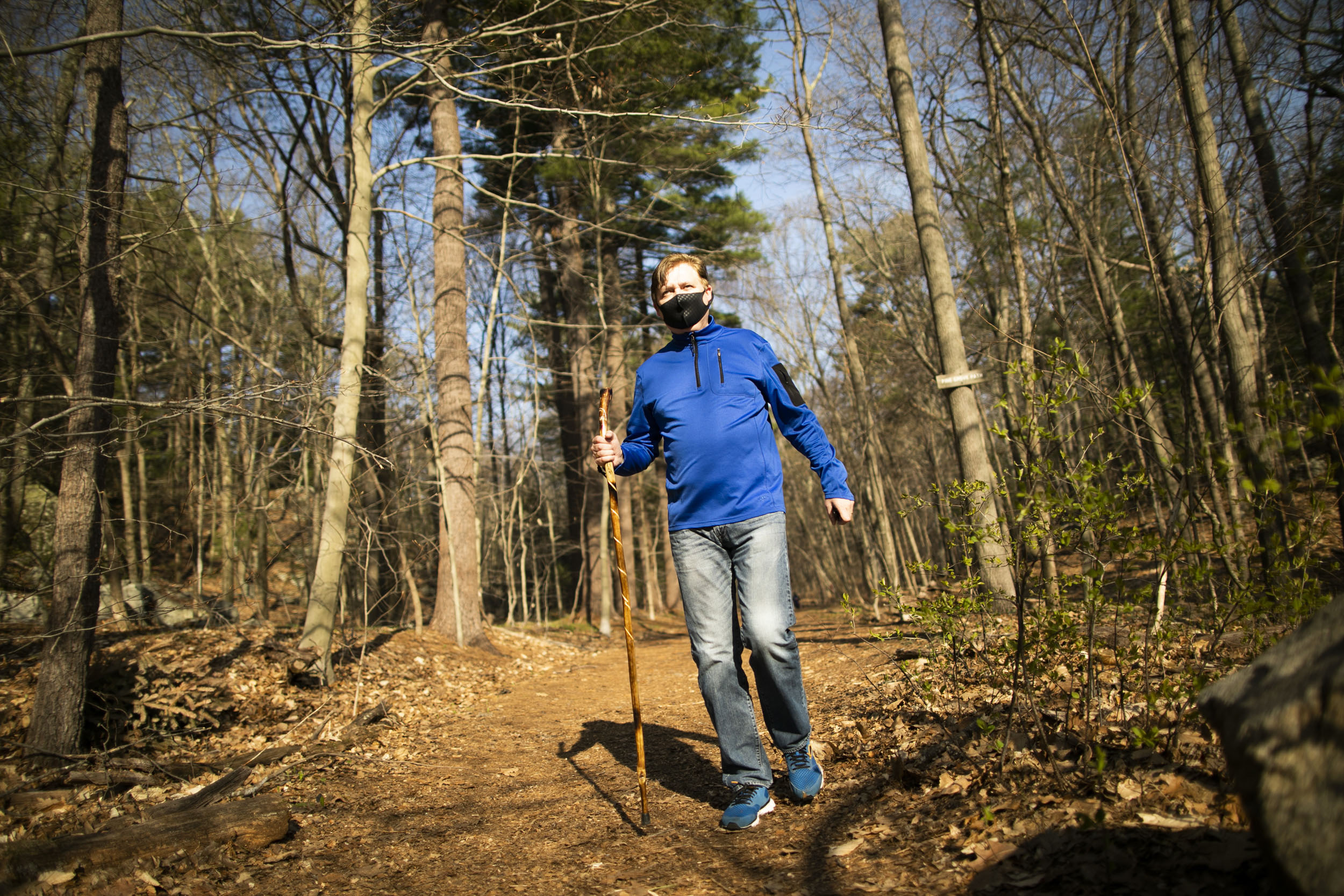
Martin Breslin
Stephanie Mitchell/Harvard Staff Photographer
Martin Breslin
Director for Culinary Operations
I’ve been working on campus since the pandemic began, but much has changed. On a typical day prior to the shutdown I walked a lot. Going between our 14 dining halls and 14 retail locations as well as various meetings, walking was a big part of my day. Literally overnight, my walking routine at work ended, as did everything else. What I realized when I no longer needed to walk at work was that I missed it. I was not getting my daily exercise or tallying up my 10,000 daily steps that I was also so proud of at the end of each day. I decided that if I am not walking at work, I will walk when I am not at work.
I chose a walking routine at dawn each day, through the trails of the Fells Reservation, which is very close to my home in Melrose. At first, it felt strange being out in somewhat rough terrain, watching the sun rise while taking in the beauty of nature. But I quickly fell in love with walking in this environment and realized that pandemic walking is far more than a substitute for the gym. It is a tonic for my soul. Walking helped me to clear my mind and decompress from the rest of the world. It provided a time for me to be introspective and thoughtful. To recognize beauty that I had overlooked or had never seen before. It was transformative and allowed me to be grateful for what I did have during a time when so much had been taken away.
As we move toward a return to normal, I am certain that I will continue my walks in the early morning at one with nature. And I am also certain that my 10,000 steps will resume during my workday. I will combine the best of both worlds, one step at time.
Some submissions were condensed and edited for length and clarity.



